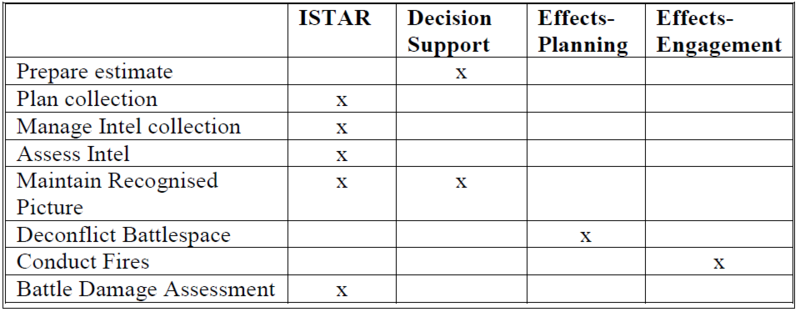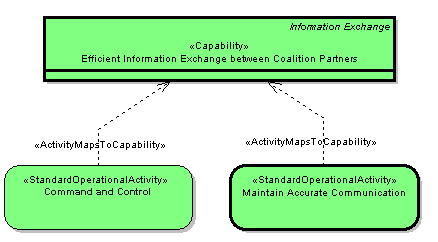Enterprise Architecture Modelling: Difference between revisions
Jump to navigation
Jump to search
Ahnboyoung (talk | contribs) |
(No difference)
|
Latest revision as of 17:46, 7 February 2016
<slideshow style="nobleprog" headingmark="。" incmark="…" scaled="false" font="Trebuchet MS" >
- title
- Enterprise Architecture Modelling
- author
- Bernard Szlachta (bs@NobleProg.co.uk)
</slideshow>
Modelling Activities。
Process can contain following steps:
- Design
- Common language spanning all domain
- Best practices
- Revision control
- Communication
- Shared model
- Publishing
- Comments and discussion (wiki, forum, etc...)
- Realisation
- Keep in sync
- Link between software and design (url, mda, etc..)
- Change
- Tools for assessing the impact of change
Views Alignment。
- Solved by mapping
- Can be extremely hard between different languages (e.g. BPMN+UML)
- Matrix allow to consider all possible connections
Views Alignment。
Viewpoints and Visualisation。
- No stakeholder (except enterprise architects) is usually interested in the whole architecture
- Stakeholders need specific views of the architecture
View (IEEE) work product expressing the architecture of a system from the perspective of specific system concerns
- The view a stakeholder wants derives from the goal and their current knowledge and their domain
- Specification of a view is expressed by means of a viewpoint
Viewpoint is defiend as (IEEE): work product establishing the conventions for the construction, interpretation and use of architecture views to frame specific system concerns
Viewpoints and Visualisation。
- In Nato Architecture Framework, a viewpoint is referred to as sub-view
- View is what you see, viewpoint is from where you are looking
- A view contains a subset of elements of the model
- Ideally a change in one view result in a change in a model which in turn should update other views
- Present in NAF in Sparx Enterprise Architect
Architecture Concept。
Abstraction
- Generalization
- Striping out structural or behavioural aspects
Architecture Model
- Model abstracts from reality
- The elements which choose to depict depends on the goal
- Model of London Tube for a commuter will be different form a model for Engineers and drivers
- We create models in order to:
- understand reality
- predict the future
- design a new product/service (i.e. modify reality)
Model Elements and Modelling Concepts
- Modelling Concepts described by a framework do not have any concrete elements
- They are usually described in Ontologies and patterns
- Examples:
- using SOA instead of batch processing
- always use asynchronous calls
Visualization vs Model。
- Model usually is not visual (XML)
- Graphs, charts and pictures are not the model, they are just the visualization of the model
- Model itself is also refereed to as the content
Visualization vs Model。
One Model Element - Two Shapes
Visualization vs Model。
Semantics
- Two shapes in the examples above mean one thing i.e. the actor
- This common meaning is called semantics
- Semantics refers to the effect of the thing itself rather than its shape
- In Human Languages, the semantics refers to the meaning as oppose to syntax
Semantic model vs Symbolic model
- Symbolic model, refers to concrete objects of the reality (UML objects)
- Semantic model, an abstractions, an interpretation of a symbolic model (UML classes)




